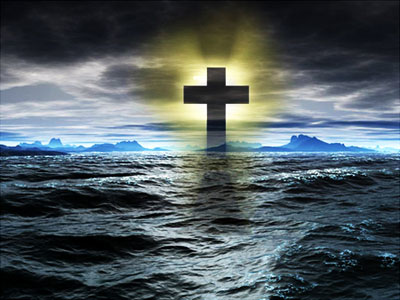
In 1604 Akbar gave a written order under his royal seal to build in Agra the Church known up to the
present day as his, Akbar's Church. One of those Firmans states that in the fourth year of his reign
Emperor Jahangir granted to the Agra Fathers 12 bighas of land (for the use of a cemetery) and a garden,
free from all taxes. This cemetery is situated near the Civil Courts, on the road to Dayal Bagh. It is
an enclosed garden with a big gate facing south. Its walls built of ancient small bricks are very
high. It is still in use.
The history of this cemetery is of great value. It has therefore been declared a protected monument
and placed under the care of Government. Many bodies were very often brought from long distances to
this cemetery even when there was a Christian cemetery available locally. Thus men like the English
Diplomat Mildenhall who died in Ajmer in 1614, the Italian Jerome Veroneo, the supposed architect
of the Taj who died at Lahore in 1640 and many others were buried here
Khojah Martyrose a very wealthy and charitable merchant is buried in the mortuary chapel he himself
built in 1611. This chapel is also the tomb of Fr. Mark Anthony Santucci, a saintly Italian Priest
from Lucca who cam to India in 1668 and died in 1686. He was and till after so many years so held
in reverence, that the chapel where he is buried is also spoken of as the PADRE SANTO CHAPEL and
vows are made of flowers, incense, candles etc offered at his grave by Christians and non-Christians
alike, for favours received through his intercession.
The cemetery is also knows as the "Martyrs' cemetery" because Fr. Manuel Garcia and Fr. Manuel Danhaya
buried there, died in prison for the faith, the former on March 23,1634 and the latter on August
2,1635. Also because in the persecution of 1632 to 1635 by Shah Jahan, hundreds of Portuguese and
Indian men, women and children perished in Agra for the faith. Shah Jahan declared war against
the Portuguese on June 11, 1632 for political causes. It involved him in the attack and capture
of their settlement of Hooghly on the North-West mouth of the River Ganges. 4400 prisoners
were taken and they were bodily marched in chains to Agra. The journey took nine months.
They were accompanied by Fathers Antonio de Christo, Francisco of the Incarnation, Joas de
Cruz, Manuel Garcia and Manuel Danhaya. A great number of them died in prison or through
terrible hardships because they refused to become Muslims. Their bodies were carried in the
silence of the night to this cemetery and confined to pits and unmarked graves.